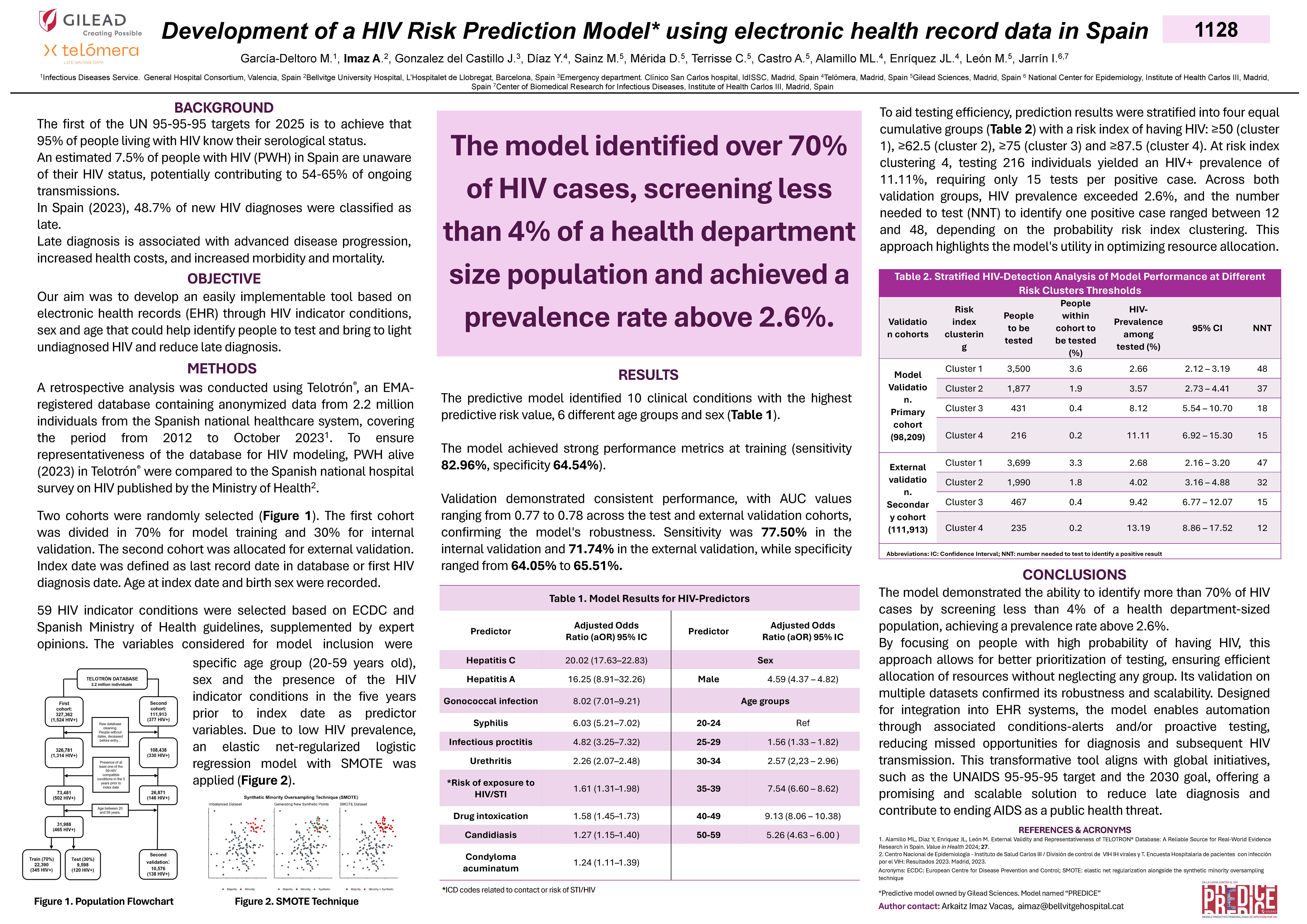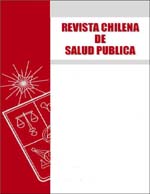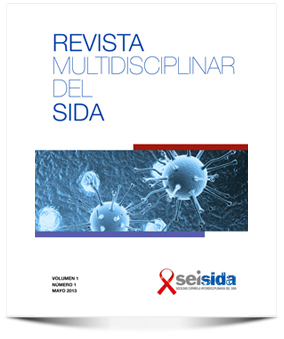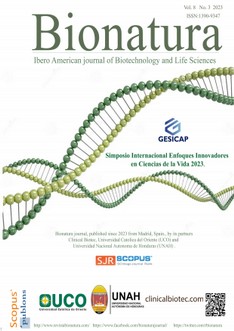Resumen
Background: In Spain, 7.5% of people living with HIV (PWH) are unaware of their infection, and 48.6% of those diagnosed with HIV in 2022 had a late diagnosis. Our aim was to develop a tool based on electronic health records (EHR) and HIV compatible indicators that could help identify people to test and bring to light undiagnosed HIV and reduce late diagnosis. Methods: A retrospective analysis was performed using EHR from Telotron (European Medicines Agency registered database with 2.2 million individuals anonymized data from the Spanish national healthcare system since 2012 until present). Two distinct cohorts were randomly selected in October 2023. The primary cohort consisted of 327,362 individuals as overall population, encompassing 1,524 confirmed HIV+ cases. The primary cohort was partitioned, with 70% allocated for model training and 30% for internal validation. A secondary cohort of 111,913 individuals served as an external validation set. An elastic net-regularized logistic regression model augmented with synthetic minority oversampling technique (SMOTE) was developed. The variables considered for model inclusion were specific age group (20-59 years old), sex and the presence of 59 HIV-associated conditions within the preceding five years as predictor variables.
Results: The model obtained identified 10 clinical conditions with the highest predictive risk value (hepatitis A & C, gonococcus, syphilis, proctitis, urethritis, sexual contact, drug intoxication, candidiasis and condyloma acuminatum), 6 different age groups and sex. Demonstrated a training sensitivity and specificity of 82.96% and 64.54%, respectively. Validation across two populations (30% of first cohort and external validation) yielded sensitivity of 77.50% and 71.74%, with specificities of 64.05% and 65.51%. The HIV prevalence observed in all cohorts exceeded 2.6%. The number needed to test (NNT) to have one positive HIV diagnosis was between 12-48 individuals, depending on the different probability ranges identified (Table 1).
Conclusions :The model identified over 70% of HIV cases using an EHR database, screening less than 4% of a health department size population and achieved a prevalence rate above 2.6%. This tool might represent a transformative solution for hidden HIV detection and help achieving the UNAIDS 95-95-95 target. Its ease of implementation and targeted approach appears to be promising to drastically reduce missed and late diagnoses, thereby significantly impacting the trajectory of the HIV epidemic.
Autoría:
ALAMILLO, Maria L.;
GARCÍA DELTORO, Miguel;
GONZÁLEZ DEL CASTILLO, Juan;
DÍAZ, Yesika;
SAINZ, María;
MÉRIDA, Domingo;
TERRISSE, Carolina;
CASTRO, Antonio;
IMAZ, Arkaitz;
ENRÍQUEZ, José L.;
LEÓN, Miguel;
JARRÍN VERA, Inmaculada






